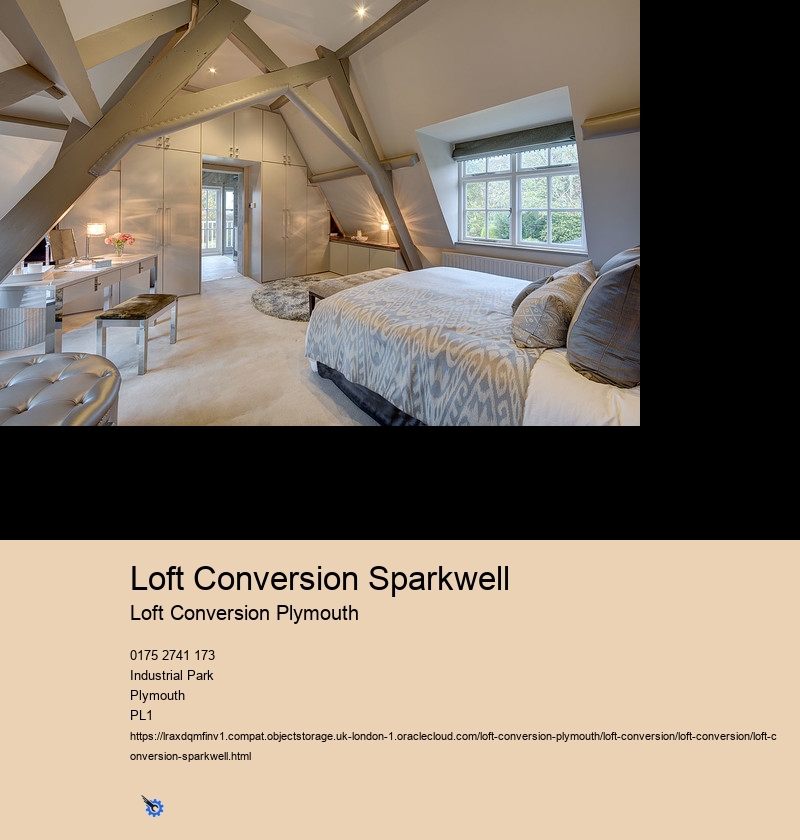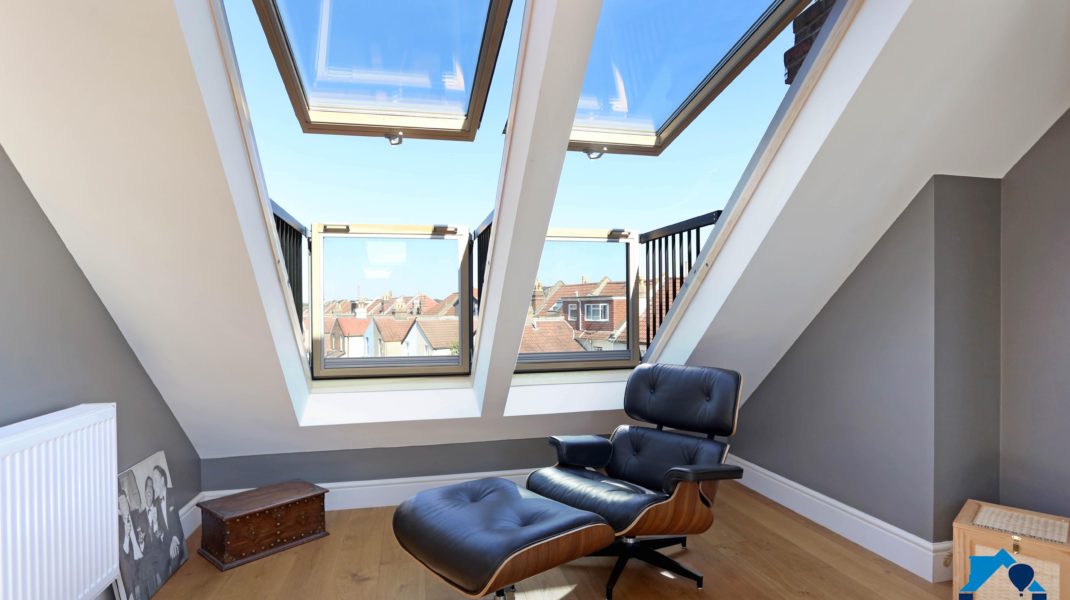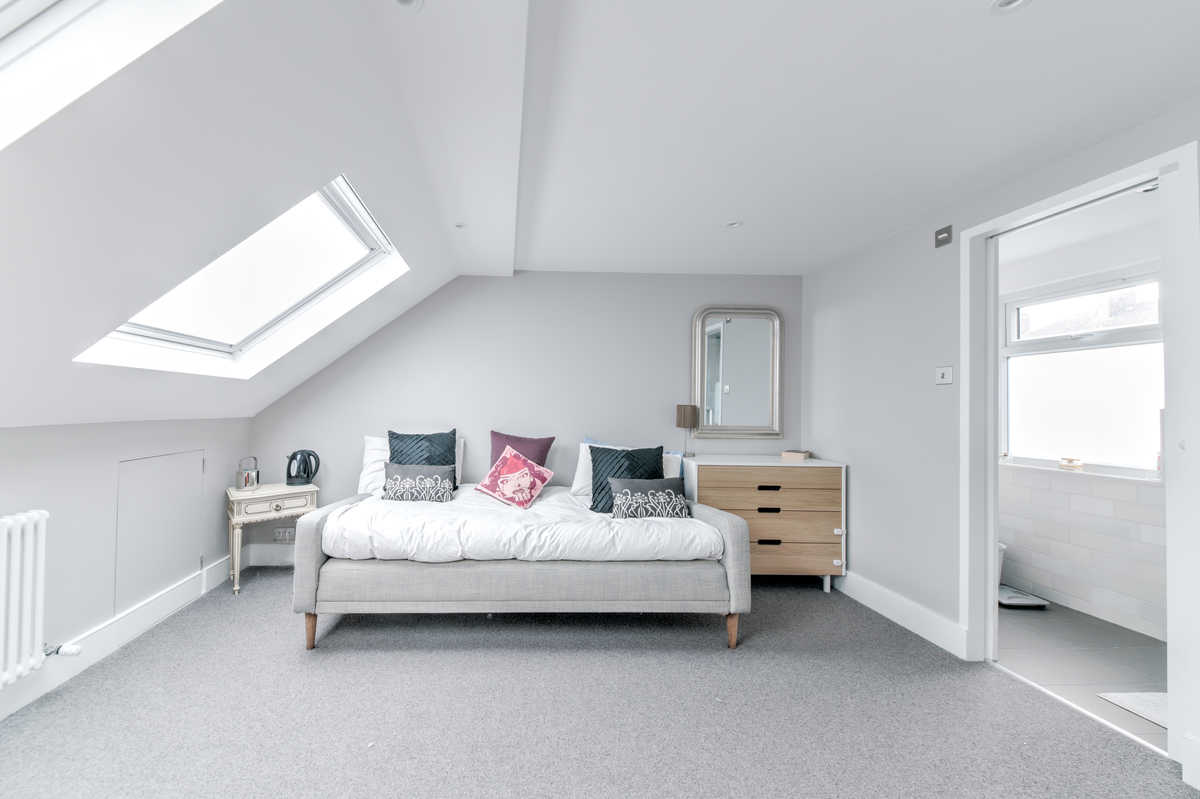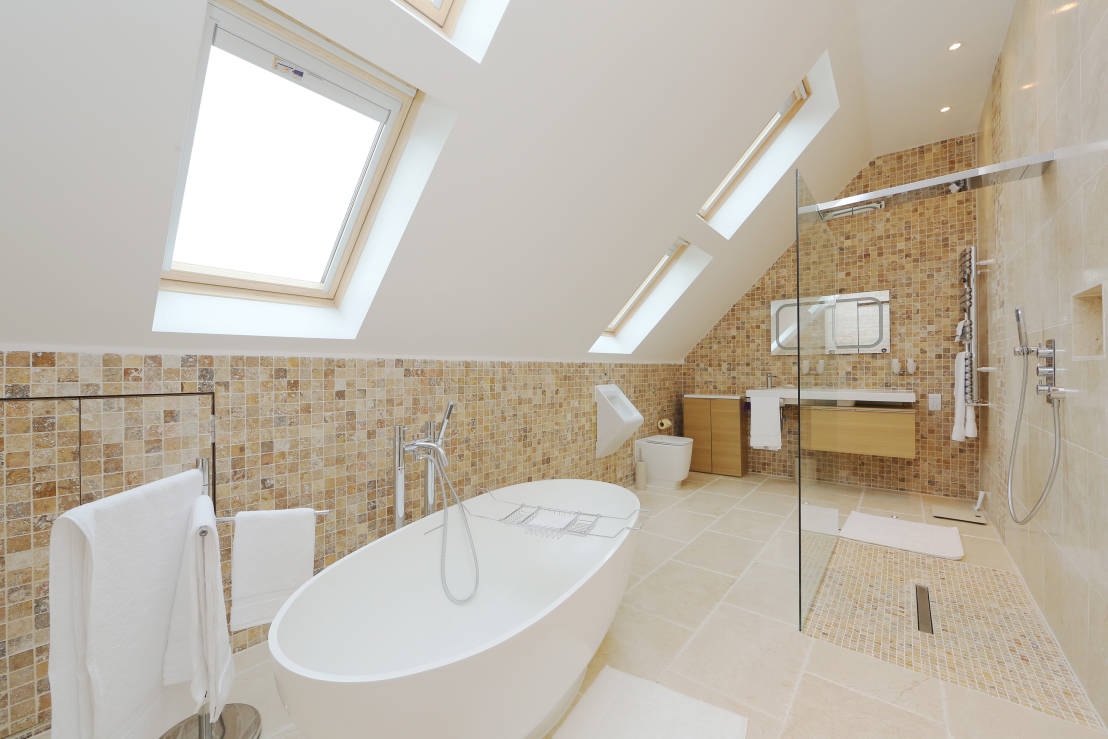Loft Conversion Sparkwell
Loft Conversion Plymouth
In terms of cost, the cost of a loft conversion in Plymouth can vary greatly depending on the size of the project and the type of work required. Generally speaking, you should budget for at least £20,000 for a basic conversion. This figure will be higher if you require more extensive work to be carried out.
Finally, you could also opt to build the stairs outside of the house. This can be a great option for larger loft conversions, as it allows for more space in the existing house. However, it also requires more construction work and may not be suitable for all types of loft conversions.
A loft conversion can add significant value to your home, depending on the level of work that is carried out. A well-planned, high-quality loft conversion can add up to 20% to the value of your home, which is considerable. However, this isn’t a guarantee – a poorly-planned or low-quality conversion could actually reduce the value of your home.
In addition to increasing the value of your home, loft conversions can also help to improve your home’s energy efficiency. By improving the insulation in your loft, you can reduce your energy bills and make your home more comfortable. This can be a great way to save money in the long run, as well as increasing the value of your home.

Loft Conversion Plymouth
In conclusion, a loft conversion in Plymouth is a great way to add value to your property, and create an extra bedroom. The cost of a loft conversion will vary depending on the size, type and materials used, but generally speaking it will cost between £15,000 and £25,000. It is important to remember to consider the layout of the room, the type of insulation and the type of stairs you will need to access the room.
No matter which option you choose for your loft conversion in Plymouth, it is important to carefully consider all of the options before making a final decision. The stairs are an integral part of any loft conversion and it is important to ensure that they are placed in the most convenient and cost-effective location.
The answer is yes, you can use your loft as a bedroom - but it depends on the type of loft you have. Most lofts can be converted into a bedroom, but some lofts may need to be structurally altered in order for this to happen. This is usually the case for lofts with sloping ceilings or those that have limited headroom.
Next, you'll need to consider the materials you'll be using. If you opt for high-quality materials like cedar shingles or slate tiles, the cost will be higher than if you use less expensive materials like asphalt shingles. Other factors you'll need to consider include the size of the dormer, whether you hire a professional to do the work, and the cost of any additional building permits or inspections that may be necessary.
If you’re looking for something a bit more substantial, a mansard conversion can be a great option. This type of conversion involves adding a full new level to the existing loft space, creating an additional floor with plenty of headroom and light. Mansard conversions are more expensive than other types of loft conversions but they can add significant value to your home.
No matter which type of loft conversion you choose, it is important to understand that you will not lose any space from inside your home. The additional living space created from the conversion is created from the roof, which was likely unused before the conversion began. Therefore, loft conversions are a great way to add extra living space to your home without losing any space inside.
Another option is to build the stairs in the corner of a room on the ground floor. This provides more space for the stairs to fit in and can be a more attractive option. However, it may not be suitable for all types of loft conversions.
Overall, the cost of converting a loft to a dormer in Plymouth will depend on the size of the loft, the type of conversion you choose, and the materials used. But with careful planning and budgeting, it is possible to convert your loft into a comfortable and stylish living space without breaking the bank.
Loft Conversion Plymouth
Relevance
| Loft conversion | Attic |
| Roof | Rafters |
| Dormer | Lofts |
| Floor | Gable |
| Planning Permission | Mansard |
| Windows | Door |
| Insulation | Velux |
| Staircase | Eaves |
| Bedroom | Building Regulations |
| Bathroom | Plumbing |
| Joists | Ventilation |
| Stair | Architect |
| Ceiling | DIY |
| Hipped-roof | Building Control |
| Stud Wall | Staircases |
| Roofing | Hips |
| Joists | Stairway |
| Natural Light | Frame Structure |
Wikipedia says this about Plymouth
Loft Conversion Dormer Plymouth
Loft Conversion Cost Plymouth
Another factor to consider is the size of your loft. If you have a large loft space, you’ll have more room to work with, and you’ll be able to make the most of the conversion without losing too much space. On the other hand, if you have a small loft, you may have to sacrifice some of the space in order to fit in a loft conversion.
Finally, it is important to remember that converting a loft into a bedroom can be a lengthy and expensive process. Therefore, it is best to consult an experienced builder or architect before beginning the project in order to ensure that the conversion is done safely and to the highest possible standard.
When budgeting for your loft conversion, you should also consider the cost of additional services such as plumbing, electrical work, and insulation. These can add up quickly and can increase the overall cost of the conversion. Additionally, you should factor in the cost of hiring an architect or surveyor to draw up plans for the conversion.
Overall, the most expensive part of a loft conversion in Plymouth is likely to be the cost of the structural work. However, the cost of insulation, windows and doors, and any additional electrical and plumbing work can all add up to create a significantly more expensive project.
In conclusion, there are a few ways to save money when converting a loft in Plymouth. Consider the type of conversion you want, get quotes from local builders and compare prices, and explore DIY options if you’re confident that you can do the work yourself. With careful planning and a realistic budget, you can
Finally, you’ll need to make sure you have the correct planning permission. If the loft conversion is within permitted development rights, you won’t need to apply for planning permission. However, if your proposed works are outside of these, you’ll need to apply for planning permission from Plymouth City Council.
Finally, if you’re not looking to make any major structural changes to your house, you may want to consider a Velux loft conversion. This type of conversion involves adding Velux windows to the roof of your house to create extra living space. Velux conversions are cost-effective and can provide plenty of extra living space without requiring any major structural changes.
In terms of the type of loft conversion that is best in Plymouth, there are several options to choose from. You could opt for a standard loft conversion, which involves converting the existing space into a usable area. Alternatively, you could choose a dormer loft conversion, which involves creating an additional room in the attic. This type of conversion is more expensive than a standard loft conversion, but it offers more space and flexibility.

Loft Conversion Dormer Plymouth
The cost of an extension also depends on the type of extension you want. Single-storey extensions are usually the most cost-effective, while two-storey extensions can be more expensive. You may also want to consider adding features such as a conservatory or a garden room to your extension, which can add to the cost.
Finally, it’s important to think about the type of furniture and fixtures you’ll be installing in the loft. If you’re planning to install a large wardrobe or a full-size bed, for example, you’ll need to factor in the space required for these items when calculating the amount of space you’ll lose.
The third most expensive part of a loft conversion in Plymouth is likely to be the cost of the windows and doors. Windows and doors are essential for the safety and security of the converted loft, so they must be of a good quality and be installed correctly. The cost of windows and doors is usually based on the size, type, and material chosen.
There are several different options for stairs in a loft conversion. The simplest option is to place the stairs at the end of a hallway or other open space on the ground floor. This is the most cost-effective option, but it may not provide the most convenient access to the loft.
Firstly, you’ll need to make sure the space is large enough to provide a usable room. The minimum space required for a conversion is approximately 25 square metres, although you’ll need more if you’re planning to create a bedroom with en-suite facilities. You’ll also need to check the height of the space. For most conversions, you’ll need at least two metres of headroom.
Loft Conversion SparkwellLoft Conversion Stairs Plymouth
It's also important to consider the cost of additional features you may want to add to your conversion. If you're planning to add a bathroom, for example, you may need to factor in the cost of plumbing and tiling.
There are several different types of loft conversions that can be done in Plymouth, each with their own benefits and drawbacks. The most popular type of loft conversion is a dormer loft conversion, which involves building an additional floor in the loft space. This is typically the most expensive option, but it can create a lot of extra space and is usually the most aesthetically pleasing. Alternatively, you can opt for a hip to gable loft conversion, which involves extending the roofline of your home to create a larger interior space. This option is often more cost-effective than a dormer conversion, but it can also be more difficult to complete.
When considering whether to convert your loft, it’s important to weigh up the costs and benefits. A loft conversion can add considerable value to your home, and also provide much-needed extra living space. However, it’s important to make sure that the cost of the project is worth it in the long run – if the cost of the conversion is more than the value it adds to your home, then it’s probably not worth doing.
Finally, the firm will move on to the exterior work, such as the installation of windows, doors, and other finishing touches. This part of the process can take up to two weeks, depending on the complexity of the job.
First, you'll need to consider the size and shape of the loft space. The larger the loft, the more expensive it will be to convert. The complexity of the project will also influence the cost. If you're simply converting a loft to a dormer without any other major renovations, the cost will be lower. However, if you're looking to add extra features like skylights or roof windows, the cost will increase.
In addition to the size and shape of the space, you’ll also need to consider the current structural integrity. The loft must be in good condition, with no signs of damage or wear and tear. If the loft is too old or has been damaged, then it may not be suitable for conversion.
The first step is to decide what type of loft conversion you want. There are two main types: a dormer loft conversion and a hip-to-gable loft conversion. The type of conversion you choose will largely determine the cost. Dormer conversions often require more structural work and are more expensive than hip-to-gable conversions.
When it comes to deciding whether to convert your loft into a bedroom, there are a few things to consider. Firstly, will you need to add insulation to the loft in order to make it a habitable space? Secondly, does the loft have the necessary headroom to accommodate a bed and other furniture? Thirdly, what kind of modifications will you need to make in order to make the space comfortable?
The materials needed for a loft conversion can range from basic plywood and insulation to more complex items like steel beams and staircases. It is important to compare the price of materials from different suppliers to get the best value for money. Additionally, the type of insulation and ventilation required will also affect the cost, so it is important to factor this in when creating your budget.

Loft Conversion Ideas Plymouth
If you’re looking to add extra living space to your home by converting your loft into a dormer, you may be wondering how much it will cost. The cost of converting a loft to a dormer in Plymouth can vary depending on a range of factors, such as the size of the loft, the type of conversion and the contractor you choose.
Finally, it is important to be aware of any other restrictions that may apply to your project. This could include restrictions on the type of materials that can be used, as well as potential restrictions on the size and height of the loft conversion. It is also worth researching any potential impact the conversion may have on neighbouring properties.
Are you looking to convert the loft in your Plymouth home? Before you start, it’s important to know what type of loft conversion is best for your needs. In this blog, we’ll cover all the different types of loft conversions available in Plymouth, so you can make an informed decision about which one is best for you.
Alternatively, if you live in a semi-detached or detached house, a hip-to-gable loft conversion may be the best option. This type of conversion involves extending the existing roofline and creating a larger roof space. This type of loft conversion is more expensive, but can add more value to your property, as it creates more usable space.
If you’ve been considering turning your loft into a bedroom, you’re not alone. Loft conversions are becoming increasingly popular as homeowners look to extend their living space without the hassle and expense of moving house. But is it worth it? Can you actually use your loft as a bedroom?
In addition to planning permission, you may also be required to obtain a building regulation approval. This is essentially a set of standards that the structure must meet in order to be deemed safe and secure. The building regulation approval is typically issued by an independent expert, such as an architect or surveyor, who will inspect the work to ensure that it meets the necessary standards. The cost of obtaining a building regulation approval will depend on the size and scope of the project, so it is important to factor this into your budget.
Loft Conversion Company Plymouth
Are you considering a loft conversion in Plymouth? If so, you’ve come to the right place. Loft conversions can be a great way to add extra living space to your home, and Plymouth is one of the best places to get one. But with so many options available, it can be difficult to know which type of loft conversion is best for your needs. In this blog post, we’ll take a look at some of the different types of loft conversions available in Plymouth, and examine the advantages and disadvantages of each.
When it comes to deciding on the best type of loft conversion for your home in Plymouth, it’s important to consider all the costs associated with the project. Converting a loft to a dormer can be a great way to add extra space and light to any home, but it can also come with a hefty price tag. So, how much does it cost to convert a loft to a dormer in Plymouth?

Can I use my loft as a bedroom?
Yes, you can use your loft as a bedroom as long as it is properly insulated and ventilated. You will need to install a railing around the edge of the loft to keep people from falling off, and you may also need to install a ladder or stairs so that people can easily access the loft.
What is the average cost of a loft conversion?
The average cost of a loft conversion can vary greatly depending on the size of the space and the type of conversion being done. Generally, the average cost of a basic loft conversion can range from £15,000 to £30,000, while more complex conversions can cost upwards of £50,000. Factors such as the size of the space and the amount of work involved will affect the overall cost of a loft conversion. For example, an attic conversion may be cheaper than a loft conversion due to the lower ceiling and easier access. Additionally, any modifications needed to the existing structure, such as reinforcements or additional support, will add to the cost of the conversion.
Do I need permission to convert my loft?
Yes, you need permission to convert your loft. Depending on where you live, you may need to submit an application for building regulations approval or for a loft conversion, as well as a planning permission application. You may also need to submit drawings and specifications of the proposed loft conversion. In some cases, you may also need to submit a structural engineering report and/or a building condition survey. Additionally, you may need to comply with other regulations, such as fire safety regulations. It is important to check the specific regulations and requirements in your area before beginning any work.
Check our other pages :
- Loft Conversion Plymouth
- Loft Conversion Devon
- Loft Conversion Sherford
- Loft Conversion Plymstock
- Loft Conversion Wembury
- Loft Conversion Saltash
- Loft Conversion Landrake
- Loft Conversion Bickleigh
- Loft Conversion Cornwood
- Loft Conversion Sparkwell
- Loft Conversion Sherford
- Loft Conversion Yealmpton
- Loft Conversion Holbeton
- Loft Conversion Buckland
- Loft Conversion Look
- Loft Conversion Liskeard
- Loft Conversion Callington
- Loft Conversion Ashburton
- Loft Conversion Minions
- Loft Conversion Princetown
- Loft Conversion Modbury
- Loft Conversion Kingsbridge
- Loft Conversion Lydford
- Loft Conversion Exmouth
- Loft Conversion Bodmin
- Loft Conversion Padstow
- Loft Conversion Okehampton